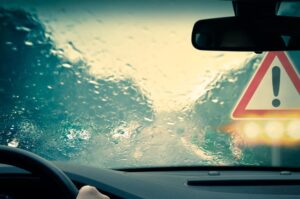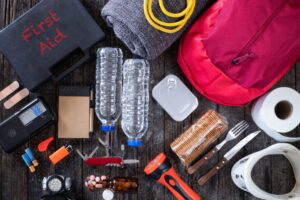Winter driving comes with its own set of problems and requires extra care and planning to keep everyone safe on the road. Weather conditions like snow, ice, and cold weather can make things dangerous, so it’s important to know how to avoid these problems. This article will discuss some of the safest and most useful things you can do while driving in the winter.
1. Preparing Your Vehicle for Winter
Making sure your car is winter-ready is one of the most important things you can do to stay safe behind the wheel. First, take a look at your tires. Winter tires are designed to give you a better grip when it’s snowing or icy outside. They are made of a softer rubber material that remains flexible in cold weather and have a deeper tread, making them easier to grip and ride. If you live somewhere where winters are very harsh, it is best to invest in a set of winter tires.
2. Safe Driving Practices in Winter
It’s important to change the way you drive in winter to stay safe on the road. Start by reducing your speed. Snow and ice make the road surface more difficult to handle, which means parking takes longer. When you drive slower, you have more time to deal with unexpected events and are less likely to lose control of your car. It is also important to maintain a safe following distance. In everyday situations, a following distance of three to four seconds is usually sufficient. However, in winter you should increase this time to eight to ten seconds so that you have more time to stop if the car in front of you stops quickly.
3. Understand and Maintain Slippage
Skidding is a common risk while driving in winter and you need to know how to deal with it. Front-wheel skids and rear-wheel skids are the two main types of skids. Knowing the difference and what to do about it can help you regain control of your car. When you turn the steering wheel, your car still moves forward while the front wheels turn. This type of skidding occurs when the front tires lose traction. If the front wheels start to slip, take your foot off the accelerator, shift into neutral, and steer the car in the desired direction. Once you have regained your grip, you can start moving again.
4. Be Prepared for Emergencies
As we head into winter, it is important to be prepared for emergencies. Make sure you have an emergency kit in your car that includes extra batteries for lighting, a blanket, water, non-perishable food, a first aid kit, and a fully charged cell phone or portable charger. You should also bring an ice scraper, snow shovel, sand, or kitty litter in case you get trapped.
If you are lost, stop. It protects you and makes it easy for people who need help to find you. To prevent carbon monoxide from building up in your car, keep your exhaust pipe clear of snow. Run the engine regularly to stay warm, but be sure to open the windows for adequate air circulation. Other drivers and assistants can see your car better if you use hazard lights or reflective emergency triangle lights.
5. Make Travel Plans
You can make winter driving safer if you plan. Check the weather forecast and road conditions for the entire route before setting out. If bad weather is expected, you can postpone your trip until the weather improves. When planning your route, stay away from roads that are not used by many people as they may not be properly maintained or cleared of ice and snow. Stay on major roads and highways, which are likely to be cleared and maintained. Tell someone your travel plans and when you expect to arrive so that they know what to do if you don’t show up when they think you will.
6. Staying Calm and Focused
It’s important to stay cool and focused while driving in the winter. Panic and stress can make decision-making and quick action difficult. Take a few deep breaths and tell yourself to stay calm. Pay attention to the road and do not use a mobile phone or other electronic devices that may distract you. Do not change lanes frequently or stop or turn quickly. For better control of your car, keep your hands on the drive wheels. If you start to feel nervous, take a break to calm down and get back on track.
Conclusion
To drive safely in winter you need to plan, change the way you drive, and stay calm and focused. You can drive safely on winter roads if you prepare your car for the season, adapt your driving style to the weather conditions, know how to deal with aquaplaning, and be prepared for emergencies. Always plan your trip with weather conditions in mind and don’t be afraid to cancel if the weather is too bad. Remembering these tips will help you drive safely in the winter and keep others safe on the road.
FAQs
1. How do you prevent slipping on slippery roads?
To avoid skidding on slippery roads, drive more slowly, increase the distance between you and the vehicle in front of you so you have more time to stop, and operate the controls carefully. Do not make sudden movements, such as braking hard, accelerating quickly, or turning sharply. These can cause your tires to lose grip.
2. What should be in the emergency kit for your winter car?
A winter car emergency kit should include extra flashlight batteries, blankets, water, non-perishable food, a first aid kit, a fully charged cell phone or portable charger, a snow shovel, an ice scraper, sand or kitty litter for traction, cross-connect cables, and reflective items. Emergency triangle.
3. How can I stay safe if I’m stuck in my car in winter?
If you are lost, stay in your car as it will provide you with a place to stay and make it easier for searchers to find you. To prevent carbon monoxide from building up, make sure your exhaust pipe is clear of snow. Run the engine frequently to stay warm, but open the windows so air can circulate. To make your car stand out, use warning lights or reflective triangles.
4. How do you ensure safety during winter travel?
Check the weather forecast and road conditions for the entire route before setting out. Plan your trip to avoid using roads that are not frequently used and may not be well maintained. Give yourself extra travel time to account for slower speeds and possible delays. Tell someone your travel plans and when you expect to arrive.
5. What are some good ways to drive in winter?
In winter you should drive more slowly and keep a safe distance between you and the car behind you. Accelerate and slow down slowly to maintain traction. Apply the brakes gently and evenly, do not move quickly. Be extra careful around roads, bridges, and overpasses, where ice formation is more likely.
6. How can you keep your mood comfortable and focused while driving in winter?
To stay calm and stay on task, tell yourself to stay calm and take deep breaths. Avoid using things that might confuse you, such as your cell phone, and don’t change lanes too often. For better balance, keep your hands on the handlebars. If you’re worried, take a break to calm down and get back on track.




